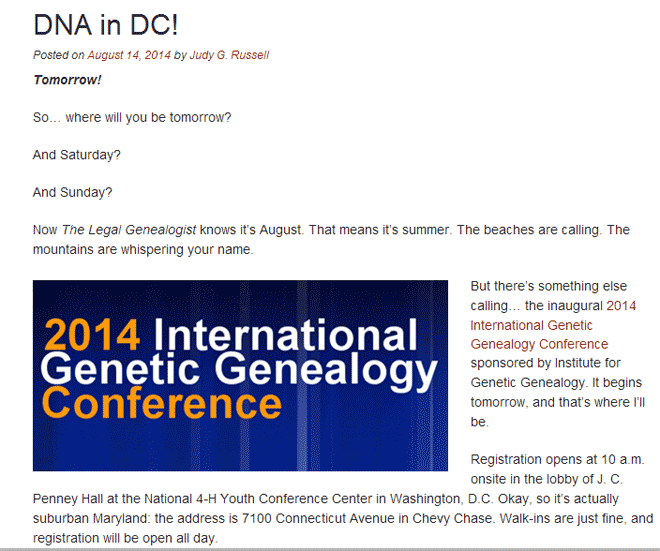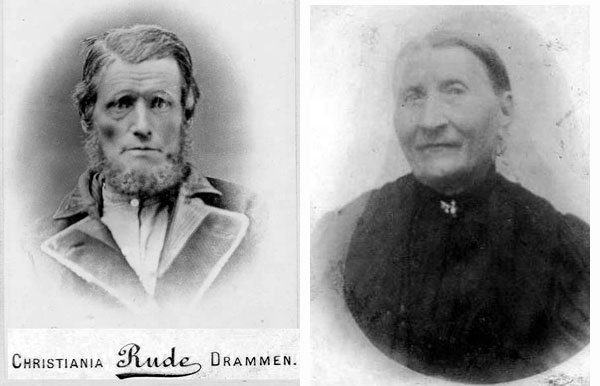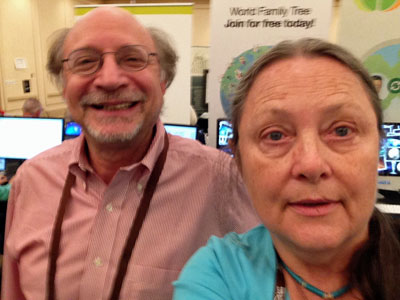Have a look at Judy Russell, the Legal Genealogist’s, post today about the Genetic Genealogy conference in Washington, DC starting tomorrow, Friday. Her post says it all. Wish I could be there!
Archives
Using my segment mapper for cousin Katy
I finally got Katy’s data uploaded to GEDmatch so that I could compare it to all my other WOLD cousins. Naturally I had to make a spreadsheet of her overlaps, save it as a CSV file, and then run it in my segment mapper tool to get a pretty picture Here it is! Click on the image below to get to the full html page that includes the mouse-overs showing the actual cM size and the base pair boundaries.
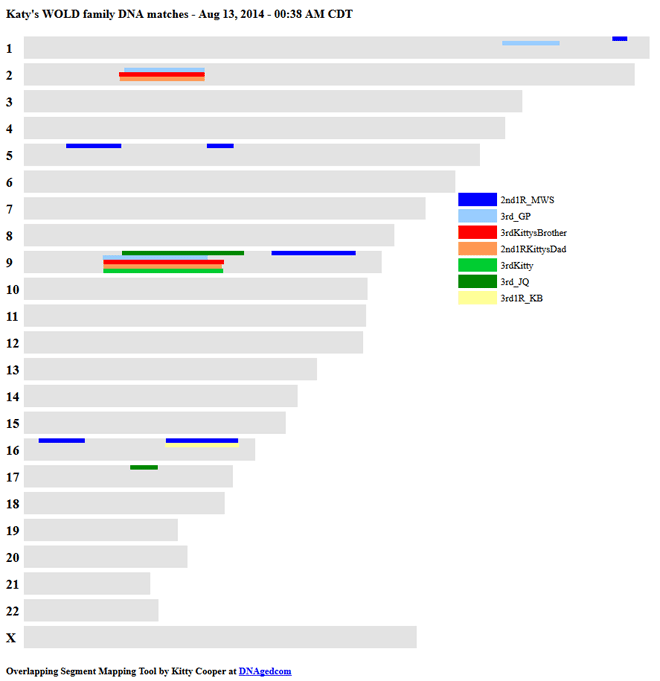
One thing I find interesting is how large the segments are for us fairly close cousins.
Continue reading
A Success with my DNA Spreadsheet
The other day I got an email from Katy, a new close cousin match for my Dad at family tree DNA, a 2nd to 4th cousin. I went and looked at where she matched Dad and saw two quite large segments, 34.47 cM and 18.87 cM. So I added those segments to Dad’s master spreadsheet and saw that the smaller one overlapped an 11.9 cM match with a known 3rd cousin on my WOLD line. But he was tested only at 23andme so I could not compare them. However because I am tested at both, as well as Dad, I could use the comparison with me to determine if they matched each other (see my post on alternate triangulation) and yes we all matched. So I wrote Katy back that she looked to be related on my WOLD line and she replied oh yes, my grandmother was a Wold!
Her grandmother was the granddaughter of my great-great-grandparents whose pictures are shown above. So they are her gg-grandparents too, making us 3rd cousins and my Dad her 2nd cousin once removed. I had received these photos from another 3rd cousin some time ago. My family no longer had those pictures. One delightful thing about finding new 3rd and 4th cousins is that they often have photographs and stories of ancestors that are new to you.
Angie Bush reports on a new DNA ancestry.com sharing matches feature
Ed note: My friend, genetic genealogist Angie Bush, the author of this post, is an expert user of the DNA functions at ancestry.com so when she excitedly reported this new feature on the ancestry group at Facebook, I asked her to do a step-by-step explanation of it for my blog. Thanks Angie!
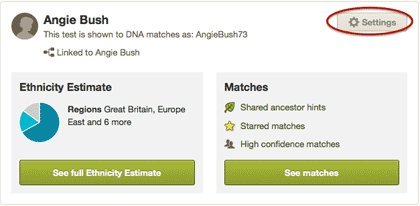 AncestryDNA launched a new feature today that allows DNA test results to be shared in much the same way that family trees can be shared with other Ancestry users.
AncestryDNA launched a new feature today that allows DNA test results to be shared in much the same way that family trees can be shared with other Ancestry users.
So if you have family members that have taken a DNA test, and you want to see the DNA matches you have in common with them, you finally can! In order to find this new feature, go to “Your DNA Home Page” and click on settings.
IAJGS conference and talking with Greenspan
If this were a financial blog you would assume a different Greenspan than Bennett and in fact they may be related, but since Alan won’t do the DNA test, we may never know. Today at the annual IAJGS conference I spent some time chatting with Bennett in the Exhibition Hall. I asked him if they could implement a triangulation feature where when two people match me on a specific segment I can check if they match each other on that spot. He said yes but gave me no time frame …
Bennett Greenspan is the founder of Family Tree DNA, one of the big three in personal DNA testing. This came about because a newly retired Bennett wanted to prove that the possible Argentinian relatives he had found were related when there was no paper trail showing this. He had read about Dr. Michael Hammer’s work with DNA and the cohanim Y chromosome marker and wondered why that sort of test could not be used for his case. Dr. Hammer laughed at him and said something like “If you knew how many crazy genealogists have been calling me … someone really ought to start a company.” The rest, as we say, is history.
Tomorrow at 1:45 Elise Freeman is going to speak about “Understanding Your DNA Results in the Context of Ashkenazi Ancestry.” I can’t wait to hear her.
